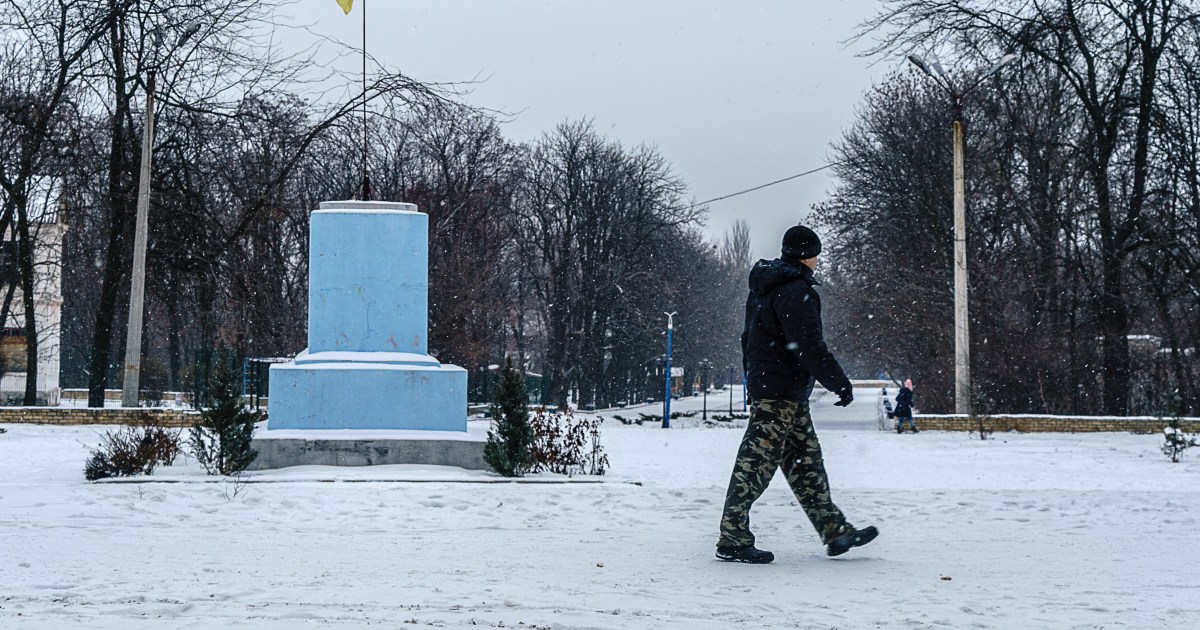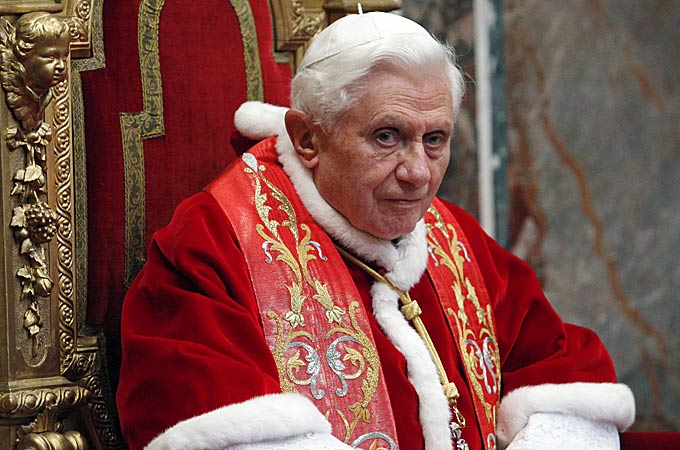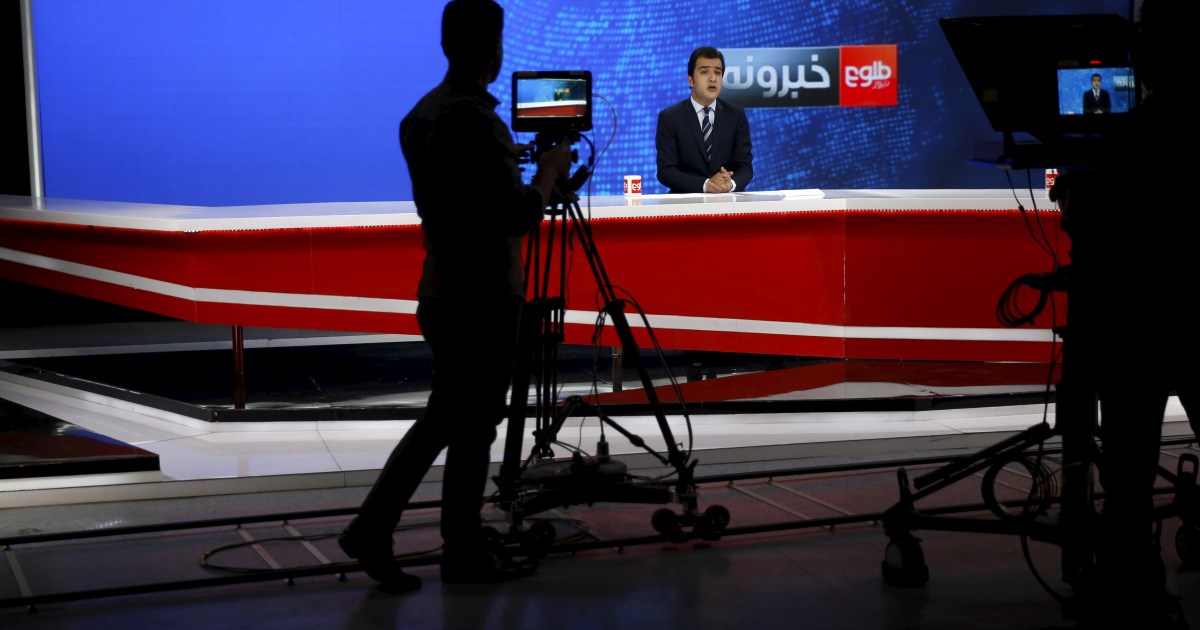Soviet nostalgia on Ukraine’s impoverished front line | Ukraine-Russia crisis
Donetsk region, Ukraine – Valeriy Dzyubinskiy opens a glass cabinet in his apartment, pulls out a collection of Soviet rouble notes he has kept for more than 30 years, and lists what they could once buy.
A meal for two in a restaurant, with money left over for breakfast, 15 roubles. A litre of vodka, 5 roubles. Water and electricity for a two-room apartment, 10 roubles.
He does not know the value of the notes in today’s currency, but says he struggles to afford these things now in Ukraine.
“Everyone here said it was bad luck when the USSR collapsed,” said Dzyubinskiy, 63, a veteran of the Soviet army and Afghan war.
“Now basic goods are expensive, more than people have, and we have to get into debt just to pay to live.”
 Valeriy Dzyubinskiy shows off his Soviet rouble collection in Krasnohorivka, Ukraine [Emre Caylak/Al Jazeera]
Valeriy Dzyubinskiy shows off his Soviet rouble collection in Krasnohorivka, Ukraine [Emre Caylak/Al Jazeera]Known as Khrushchyovkas after former Soviet leader Nikita Khrushchev, the apartment buildings in the front-line city of Krasnohorivka are home to others like Dzyubinskiy who also feel nostalgic about Soviet times.
The city is just 20 kilometres (12.4 miles) west of Donetsk, the de facto capital of territory controlled by Russian-backed separatists – the self-proclaimed Donetsk People’s Republic – with its outskirts 700 metres from the line of contact.
Violence is a draining fact of life on the doorstep of the low-level, eight-year conflict, which rumbles on despite a 2015 ceasefire.
Krasnohorivka comes under regular fire from pro-Moscow fighters, and even fell under their control for four months in 2014.
In May last year, a hospital housing 45 COVID-19 patients was shelled.
But enemy fire is just one challenge. Years of war have left many here without work. Since 2015, after pipelines were damaged in heavy fighting, there has been no gas supply.
Almost 10,000 people live without central heating as temperatures at this time of year regularly drop below -10 degrees Celsius (14F). Many locals say they are scared of winter.
Pipes pump black, acrid smoke into the street from the “Khrushchyovkas” as residents burn wood, rubbish and old shoes to warm up.
“This city was world-famous in Soviet times, our factories employed thousands and transported bricks to Europe, the US and India,” said Dzyubinskiy, adding that it was a “little Kyiv”. “Now we don’t always even have proper wood to burn.”
 Valeriy Dzyubinskiy with his neighbour in Krasnohorivka [Emre Caylak/Al Jazeera]
Valeriy Dzyubinskiy with his neighbour in Krasnohorivka [Emre Caylak/Al Jazeera]According to the 2001 census – the only such survey carried out since the fall of the Soviet Union – 57 percent of people in the Donetsk region identified as Ukrainian and 38 percent as Russian.
Seventy-five percent of locals considered their native language to be Russian.
Ukraine has increasingly chosen a pro-Western path, but Russia offers the comfort of a shared history. In Moscow, some officials accuse Kyiv of oppressing Russian speakers.
It is an identity struggle that has plagued Ukraine since independence from the Soviet Union in 1991. Residents of eastern Ukraine are often accused of being pro-Russian, yet they are also at the vanguard of a possible attack by Moscow, a growing possibility as tensions mount.
Russia has been amassing tens of thousands of troops and military hardware along the country’s borders and in annexed Crimea, sparking fears of a possible invasion. Moscow denies it is planning an attack, but is increasingly frustrated by Washington and NATO’s refusal to heed its security demands – chief among them to never allow Ukraine NATO membership.
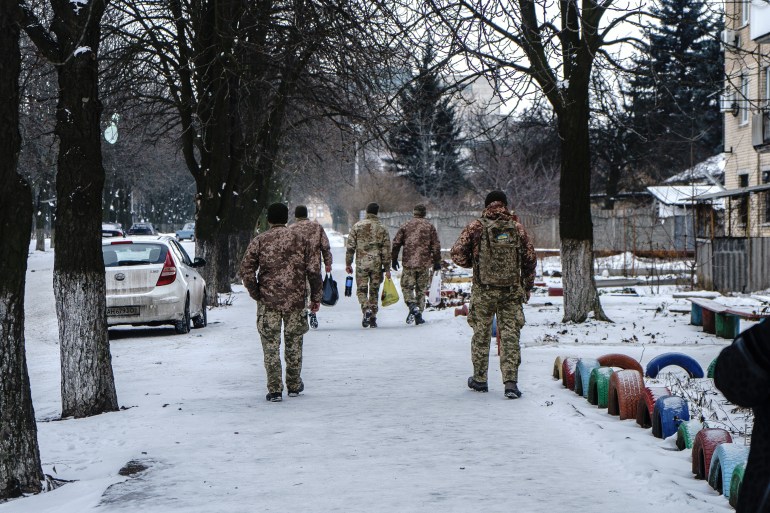 Ukrainian soldiers pictured in Krasnohorivka [Emre Caylak/Al Jazeera]
Ukrainian soldiers pictured in Krasnohorivka [Emre Caylak/Al Jazeera]Dzyubinskiy and other residents Al Jazeera interviewed – who all spoke in Russian – said they neither support Moscow’s actions nor want to be controlled by Russia.
At the same time, they feel abandoned by Ukraine’s government.
“We want to live in Ukraine, not Russia, but we want the Ukraine we had in the Soviet Union,” said Dzyubinskiy.
Other residents said if they wanted to live under Russian rule, they would move to Russia.
“I don’t care even if there was a monkey on top of the government if life for people here would get better,” said Alla Radchenko, 51, a former nurse.
“We’re sick of living in hell for the last eight years.”
Under the Soviet Union, cities with successful factories were renowned.
Up to the start of hostilities in 2014, more than 16,000 people lived in Krasnohorivka with 50 percent of the employed working in industry.
Now most factories here are abandoned or have been taken over by the military.
The city is controlled by a military administration rather than a civilian one.
Residents have few democratic rights and as attacks take place regularly, little restoration work can be done.
Despite the nostalgia, Ukraine suffered disproportionately under former Soviet leader Joseph Stalin.
His war on land ownership affected mostly Ukrainian-speaking peasants and forced collective farming led to a famine that killed up to 10 million people in the early 1930s.
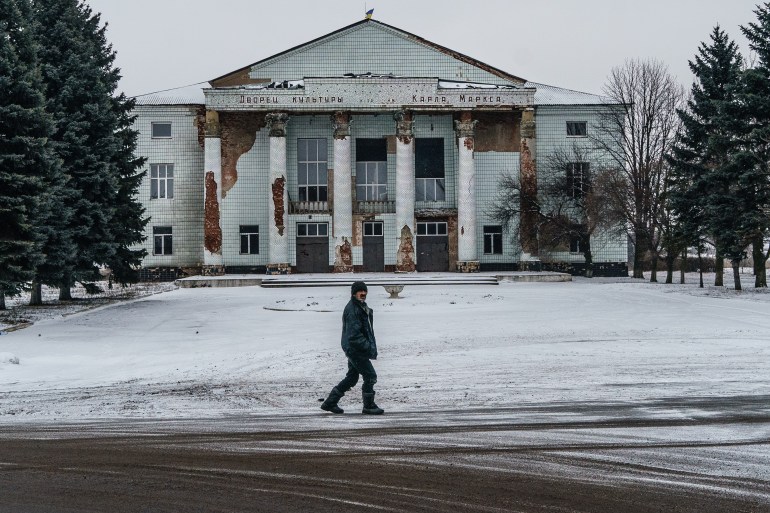 The abandoned building of the Karl Marx cultural centre near Krasnohorivka [Emre Caylak/Al Jazeera]
The abandoned building of the Karl Marx cultural centre near Krasnohorivka [Emre Caylak/Al Jazeera]But Dzyubinskiy insists that Soviet times were full of prosperity, when the state made sure your basic needs were met.
He took this reporter on a tour of his Khrushchyovka, which has military barracks in the basement. He points to concrete communal corridors, piled with people’s stored goods, and says they were carpeted, even heated, in Soviet times.
He served as part of airborne troops in Kabul from 1979 to 1981, before a spine injury in an explosion.
Despite Dzyubinskiy’s protestations that he is Ukrainian first, the TV in his living room blares a talk show on the state-owned Russian channel Perviy Kanal.
On his fridge, just below a picture of his granddaughter, there is also a magnet emblazoned with the face of Russia’s President Vladamir Putin.
“Crimea is ours!” it says in Russian.

